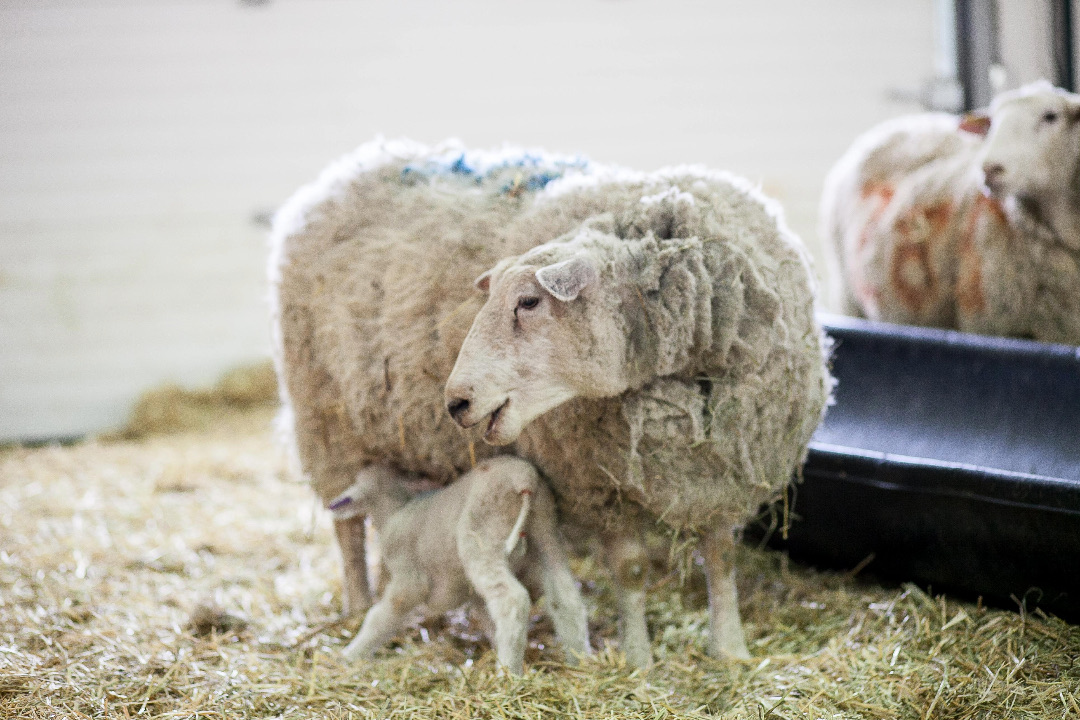
USask scientists aim to determine appropriate sheep vaccination protocols
Producers use vaccination schedules to vaccinate their sheep against diseases caused by the bacteria Clostridia, but what’s largely unknown is the best time to immunize for clostridial diseases.
By Cat ZensDr. Fabienne Uehlinger of the Western College of Veterinary Medicine (WCVM) says sheep producers need better clarity about when to vaccinate their animals, given a lack of previous research in the area.
“We are trying to establish better guidelines in regard to the vaccine schedules that sheep producers could or should apply when looking at vaccinating their sheep for clostridial diseases,” says Uehlinger, an associate professor in the WCVM’s Department of Large Animal Clinical Sciences.
Uehlinger is leading a team of international researchers who are determining the most effective vaccination schedules for lambs and sheep. Their research focuses on the vaccine for Clostridium perfringens type D. This bacterial pathogen causes pulpy kidney disease — also known as overeating disease — which is deadly for sheep.
Although these types of infections are not zoonotic (can’t be transmitted to people), they create economic challenges for sheep producers through the loss of the animal and potential veterinary expenses.
Uehlinger says maintaining sheep vaccination programs is essential to protect sheep and lambs from contracting pulpy kidney disease and other clostridial infections. But the label recommendations for approved vaccines are vague, or they recommend vaccinating close to lambing season — a stressful time for the pregnant ewe.
Sheep producers want to avoid the risk of mismothering (when the mother fails to take maternal care of its young), so many farmers vaccinate pregnant ewes earlier in their gestation or they vaccinate newborn lambs. However, there’s little information available to help producers and veterinarians understand if vaccinating animals at these times results in equally good vaccine protection.
“Our hope is to provide some peace of mind for producers who cannot or don’t want to handle their sheep so close to lambing,” Uehlinger says. “Most vaccines don’t have specific recommendations, which is a problem in and of itself because the producer then needs to guess ‘What should I do?’”
The WCVM’s project received nearly $103,000 from the Saskatchewan Agriculture Development Fund and is also receiving support from the province’s sheep industry. Gord Schroeder, executive director of the Saskatchewan Sheep Development Board (SSDB), says sheep producers welcome the WCVM team’s interest in conducting sheep-focused vaccine research.
“The [sheep] industry very much appreciates the interest of the WCVM in sheep research, and we are very pleased to partner with the WCVM,” Schroeder says.
The SSDB, which is responsible for promoting and developing Saskatchewan’s sheep industry, is providing additional in-kind support to the study by finding participants for the project and reporting back to the sheep industry regarding the project’s results.
Along with Uehlinger, the project’s research team includes Drs. Dinesh Dadarwal and Fritz Schumann of the WCVM. Collaborators from BIOSAN Laboratories in Uruguay and Dr. Francisco A. Uzal, a University of California Davis professor from the California Animal Health and Food Safety Lab, are also participating in the study.
The researchers are testing the appropriateness of vaccines through several trials planned with varying timings of vaccinations of ewes as well as their newborn lambs.
“We’re trying to see how strong of an immune response there is to the vaccines at different administration time points to get a better understanding of what the actual protocol should be,” says Uehlinger.
To determine whether sheep are responding to the vaccines, scientists need to measure antibody levels in the animals’ blood. To do this, Uehlinger’s research team will conduct quantitative enzyme-linked immunosorbent assays (ELISAs) on the vaccinated sheep’s serum. As this test isn’t commercially available, she says her team needs to go through the timely process of developing it in a lab.
The researchers’ aim is to conduct vaccine trials during the spring in both 2024 and 2025, and they plan on vaccinating pregnant sheep before lambing at different time intervals. Some ewes will be vaccinated six weeks before lambing, while others will be vaccinated two weeks before lambing. When the lambs are born, some will be vaccinated at two weeks of age, while others will be vaccinated at four weeks of age.
Uehlinger’s research team will then measure the vaccine antibody response in the blood of ewes and lambs to determine whether any of them have better or worse antibody levels. The scientists will then compare these antibody levels to those generally known to be protective against pulpy kidney disease.
The team will conduct the trials with the WCVM’s own sheep herd as well as a commercial flock. Uehlinger says the reasoning for this is that sheep at the college may be managed differently than on commercial farms, so testing on both sites can provide more accurate results.
“It was important for us to have evidence established in at least one commercial flock, and not just in our WCVM sheep,” she says.
If proven to be meaningful, this study’s results can help clarify vaccination windows for sheep producers while improving industry.
“Hopefully it’s going to provide the producers with better information as to what they should do, or whether what they are doing appears to be adequate to provide them some peace of mind,” Uehlinger says.
Cat Zens of North Battleford, Sask., is a fourth-year student in the University of Regina’s School of Journalism. She is working as a research communications intern at the Western College of Veterinary Medicine (WCVM) in 2023.
